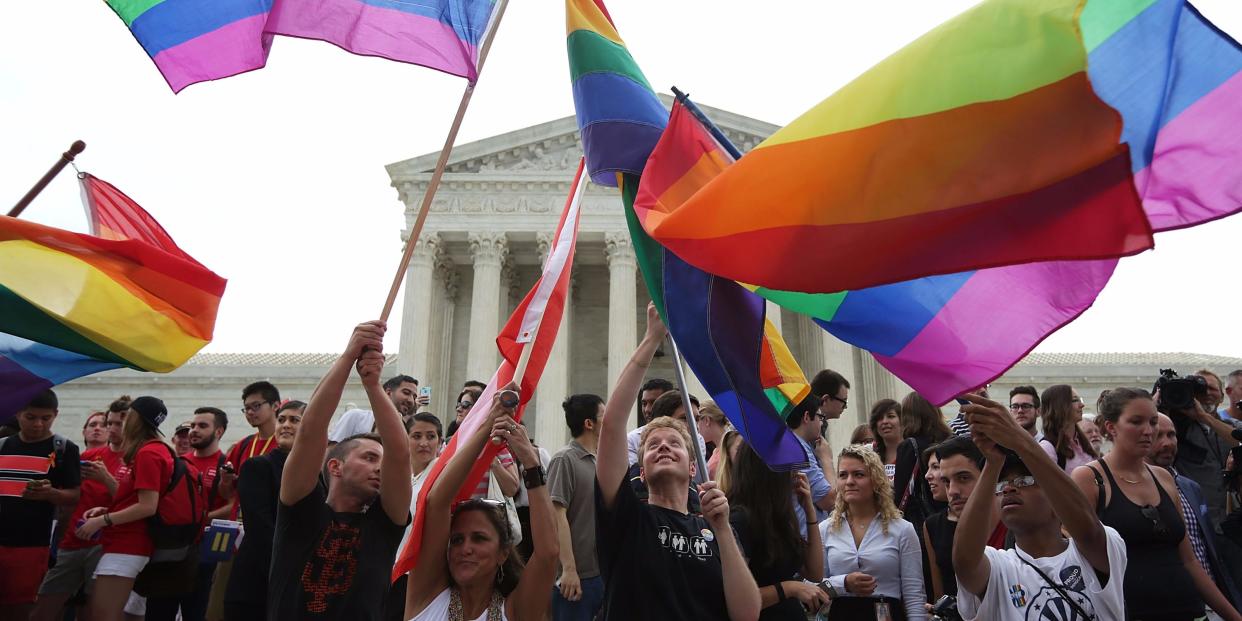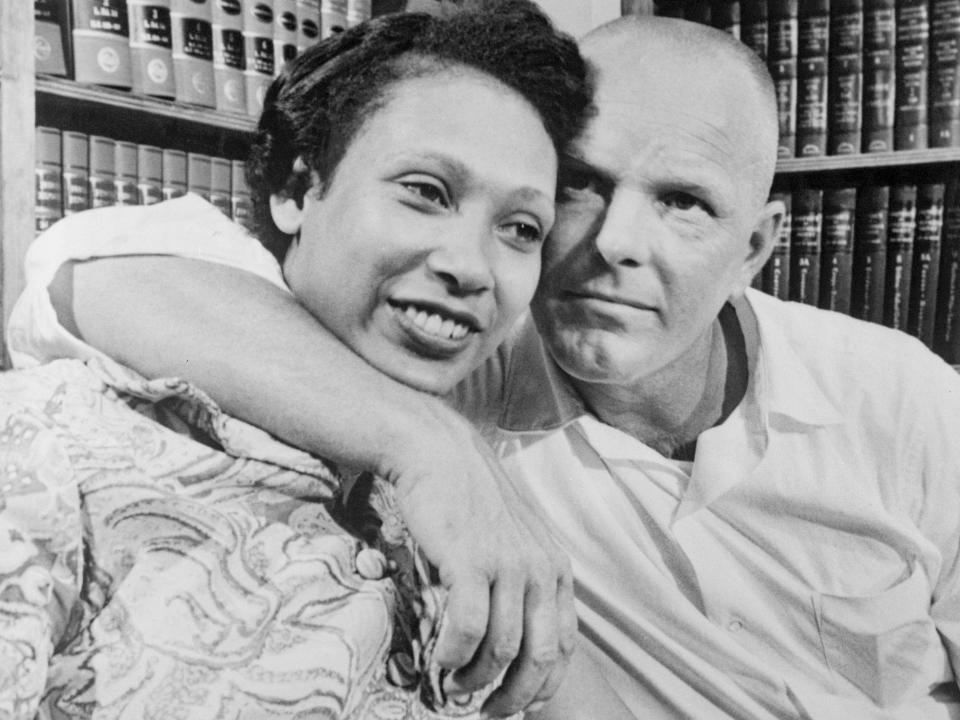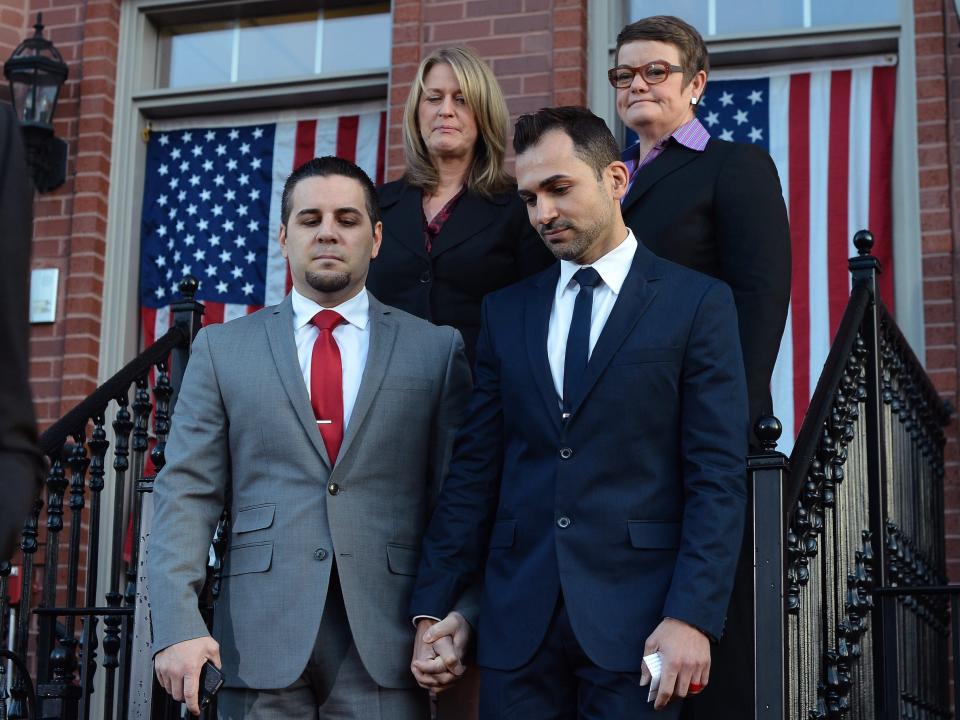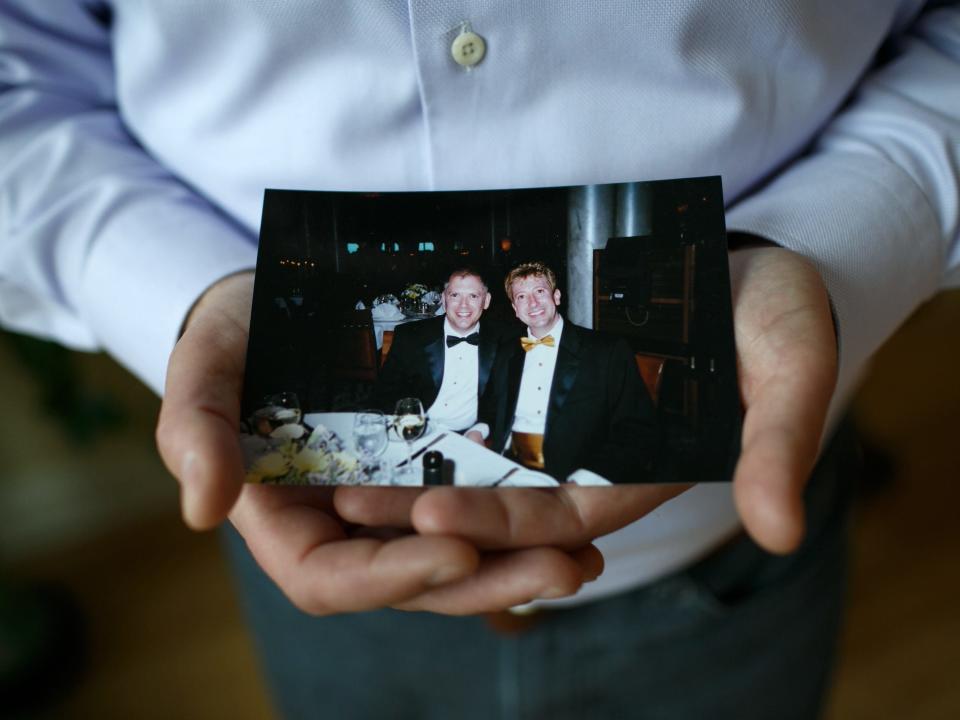The 4 landmark Supreme Court rulings that changed marriage in the US

- Oops!Something went wrong.Please try again later.
- Oops!Something went wrong.Please try again later.
- Oops!Something went wrong.Please try again later.
- Oops!Something went wrong.Please try again later.
On Tuesday, December 13, 2022, President Joe Biden signed a bill protecting same-sex and interracial marriage.
The law repealed the Defense of Marriage Act, which defined marriage as between a man and a woman.
Here are four landmark Supreme Court rulings that changed the legal definitions of marriage in the US.
Loving v. Virginia (1967)

Richard Loving, a white construction worker, and Mildred Jeter, a Black woman, were married in Washington, D.C., in June 1958. They later returned to their home in Caroline County, Virginia, where interracial marriage is illegal due to the state's Racial Integrity Act of 1924.
In October 1958, Loving and Jeter were charged with violating Virginia's law against interracial marriage. On January 6, 1959, they were sentenced to one year in prison.
A judge suspended their sentence on the condition that they leave the state and not return for at least 25 years, stating in an opinion that: "Almighty God created the races white, black, yellow, malay and red, and he placed them on separate continents. And, but for the interference with his arrangement, there would be no cause for such marriage. The fact that he separated the races shows that he did not intend for the races to mix."
Loving wrote to then-US Attorney General Robert Kennedy for help, who referred them to the ACLU, which represented them in the landmark Supreme Court case, Loving v. Virginia, in 1967.
In a unanimous decision, the nation's highest court ruled that state bans on interracial marriage were unconstitutional.
Source: Business Insider, Cornell Law, ACLU
United States v. Windsor (2013)

In 1996, Congress enacted the Defense of Marriage Act (DOMA), which legally defined marriage as being between a man and a woman. In 2013, Edie Windsor sought to challenge the law following the death of her wife, Thea Spyer.
After a 40-year engagement living together as a couple in New York City, Windsor and Spyer were married in Canada in May 2007. Spyer died two years later after living for years with multiple sclerosis.
According to federal tax law, the spouse who dies can leave their assets, like a family home, to their surviving partner without incurring estate taxes. But after Spyer died, the federal government refused to recognize Windsor and Spyer's marriage due to DOMA because they were a same-sex couple, forcing Windsor to pay the estate tax.
Windsor challenged the constitutionality of DOMA and requested a refund of the estate tax she had to pay because her marriage was not legally recognized.
In June 2013, the Supreme Court ruled that section three of DOMA was unconstitutional on the grounds that the federal government cannot discriminate against married and lesbian and gay couples when determining federal benefits and protections.
Source: ACLU
Hollingsworth v. Perry (2013)

The same year that Windsor challenged DOMA, two same-sex couples in California sought to do the same after they were denied marriage licenses under the state's Proposition 8, which also defined marriage as between a man and a woman.
The case, filed by plaintiffs Kris Perry, Sandy Stier, Paul Katami, and Jeff Zarrillo, went through a number of name changes, originally named Perry v. Schwarzenegger when former California Gov. Arnold Schwarzenegger was in office, later changing to Perry v. Brown when Jerry Brown took office in 2011.
When Brown declined to defend Proposition 8's constitutionality, Dennis Hollingsworth, a former Republican state senate minority leader and a leader of the official sponsor of the ballot initiative, ProtectMarriage.com, took action to defend it, renaming the case to what it is known today, Hollingsworth v. Perry.
Attorneys for the two couples filed the lawsuit in northern California in May 2009. In August 2010, Judge Vaughn Walker struck down Prop 8, ruling that the initiative violated due process and equal protection rights, to which the defendants in the case filed an appeal to vacate Walker's ruling because he had been in a relationship with another man for 10 years.
After the case was elevated to the California Supreme Court in November 2011, the US Supreme Court heard arguments in the case in December 2012, later ruling in 2013 that the Prop 8 backers had no right to appeal the initial district court ruling and allowed the freedom to marry to continue in the state of California.
Source: The Washington Post, Lambda Legal
Obergefell v. Hodges (2015)

James Obergefell and John Arthur were in a relationship for 22 years and legally married in Maryland in 2013 after the Supreme Court struck down the Defense of Marriage Act. Arthur died on October 22, 2013 after being diagnosed with amyotrophic lateral sclerosis (ALS).
Following his husband's death, Obergefell filed a lawsuit challenging the law in Ohio, where they lived, where the state government refused to recognize same-sex marriage on death certificates. Obergefell was the lead plaintiff in the case, and, after a series of name changes, then-Director of the Ohio Department of Health Richard Hodges was named as the defendant in the case in August 2014.
Obergefell was joined by three other couples in from Kentucky, Michigan, and Tennessee who sued their states on the grounds of breaching the Equal Protection Clause in the 14th Amendment.
In a watershed moment on June 26, 2015, the Supreme Court ruled 5-4 that the 14th Amendment requires all states to recognize all marriages lawfully performed out-of-state and issue marriage licenses between same-sex couples. The landmark decision guarantees that the right to marry includes same-sex couples.
"No longer may this liberty be denied," Justice Anthony Kennedy said at the time.
Source: Business Insider, ACLU of Ohio, Cornell Law
Read the original article on Business Insider

